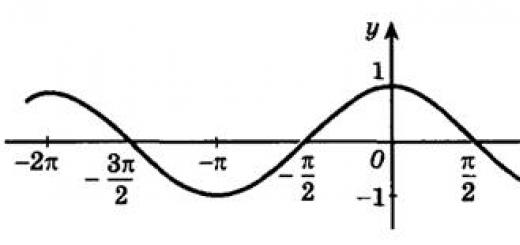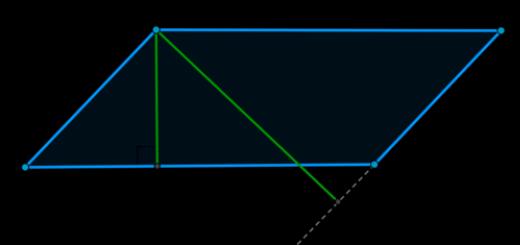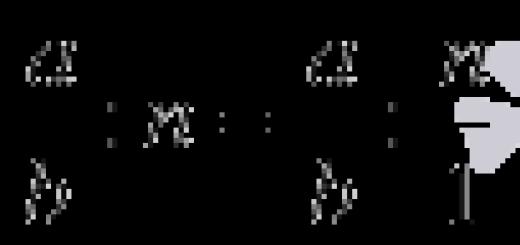Is division. In this article we will talk about division of ordinary fractions. First, we will give a rule for dividing ordinary fractions and look at examples of dividing fractions. Next, we will focus on dividing an ordinary fraction by a natural number and a number by a fraction. Finally, consider how the division of an ordinary fraction by a mixed number is carried out.
Page navigation.
Division of a common fraction by a common fraction
It is known that division is the inverse of multiplication (see the connection between division and multiplication). That is, division involves finding an unknown factor when the product and another factor are known. The same sense of division is preserved when dividing ordinary fractions.
Consider examples of dividing ordinary fractions.
Note that we should not forget about the reduction of fractions and about the selection of the integer part from an improper fraction.
Division of a common fraction by a natural number
We'll give it right away rule for dividing a fraction by a natural number: to divide the fraction a / b by a natural number n, you need to leave the numerator the same, and multiply the denominator by n, that is, .
This division rule follows directly from the division rule for ordinary fractions. Indeed, the representation of a natural number as a fraction leads to the following equalities ![]() .
.
Consider an example of dividing a fraction by a number.
Example.
Divide the fraction 16/45 by the natural number 12.
Solution.
By the rule of dividing a fraction by a number, we have ![]() . Let's do the reduction: . This division is completed.
. Let's do the reduction: . This division is completed.
Answer:
![]() .
.
Division of a natural number by a common fraction
The rule for dividing fractions is similar rule for dividing a natural number by a common fraction: to divide a natural number n by an ordinary fraction a / b, you need to multiply the number n by the reciprocal of the fraction a / b.
According to the voiced rule, , and the rule of multiplying a natural number by an ordinary fraction allows you to rewrite it in the form.
Consider an example.
Example.
Divide the natural number 25 by the fraction 15/28.
Solution.
Let's move from division to multiplication, we have  . After reduction and selection of the integer part, we get .
. After reduction and selection of the integer part, we get .
Answer:
 .
.
Division of a common fraction by a mixed number
Division of a common fraction by a mixed number easily reduced to the division of ordinary fractions. To do this, it is enough to
With fractions, you can perform all actions, including division. This article shows the division of ordinary fractions. Definitions will be given, examples will be considered. Let us dwell on the division of fractions by natural numbers and vice versa. The division of an ordinary fraction by a mixed number will be considered.
Division of ordinary fractions
Division is the inverse of multiplication. When dividing, the unknown factor is at the known product and another factor, where its given meaning is preserved with ordinary fractions.
If it is necessary to divide the ordinary fraction a b by c d, then to determine such a number, you need to multiply by the divisor c d, this will eventually give the dividend a b. Let's get a number and write it a b · d c , where d c is the reciprocal of c d number. Equalities can be written using the properties of multiplication, namely: a b d c c d = a b d c c d = a b 1 = a b , where the expression a b d c is the quotient of dividing a b by c d .
From here we obtain and formulate the rule for dividing ordinary fractions:
Definition 1
To divide an ordinary fraction a b by c d, it is necessary to multiply the dividend by the reciprocal of the divisor.
Let's write the rule as an expression: a b: c d = a b d c
The rules of division are reduced to multiplication. To stick to it, you need to be well versed in performing multiplication of ordinary fractions.
Let's move on to the division of ordinary fractions.
Example 1
Perform division 9 7 by 5 3 . Write the result as a fraction.
Solution
The number 5 3 is the reciprocal of 3 5 . You must use the rule for dividing ordinary fractions. We write this expression as follows: 9 7: 5 3 \u003d 9 7 3 5 \u003d 9 3 7 5 \u003d 27 35.
Answer: 9 7: 5 3 = 27 35 .
When reducing fractions, you should highlight the whole part if the numerator is greater than the denominator.
Example 2
Divide 8 15: 24 65 . Write the answer as a fraction.
Solution
The solution is to switch from division to multiplication. We write it in this form: 8 15: 24 65 = 2 2 2 5 13 3 5 2 2 2 3 = 13 3 3 = 13 9
It is necessary to make a reduction, and this is done as follows: 8 65 15 24 \u003d 2 2 2 5 13 3 5 2 2 2 3 \u003d 13 3 3 \u003d 13 9
We select the integer part and get 13 9 = 1 4 9 .
Answer: 8 15: 24 65 = 1 4 9 .
Division of an extraordinary fraction by a natural number
We use the rule of dividing a fraction by a natural number: to divide a b by a natural number n, you need to multiply only the denominator by n. From here we get the expression: a b: n = a b · n .
The division rule is a consequence of the multiplication rule. Therefore, representing a natural number as a fraction will give an equality of this type: a b: n \u003d a b: n 1 \u003d a b 1 n \u003d a b n.
Consider this division of a fraction by a number.
Example 3
Divide the fraction 1645 by the number 12.
Solution
Apply the rule for dividing a fraction by a number. We get an expression like 16 45: 12 = 16 45 12 .
Let's reduce the fraction. We get 16 45 12 = 2 2 2 2 (3 3 5) (2 2 3) = 2 2 3 3 3 5 = 4 135 .
Answer: 16 45: 12 = 4 135 .
Division of a natural number by a common fraction
The division rule is similar about the rule of dividing a natural number by an ordinary fraction: to divide a natural number n by an ordinary a b , it is necessary to multiply the number n by the reciprocal of the fraction a b .
Based on the rule, we have n: a b \u003d n b a, and thanks to the rule of multiplying a natural number by an ordinary fraction, we get our expression in the form n: a b \u003d n b a. It is necessary to consider this division with an example.
Example 4
Divide 25 by 15 28 .
Solution
We need to move from division to multiplication. We write in the form of an expression 25: 15 28 = 25 28 15 = 25 28 15 . Let's reduce the fraction and get the result in the form of a fraction 46 2 3 .
Answer: 25: 15 28 = 46 2 3 .
Division of a common fraction by a mixed number
When dividing an ordinary fraction by a mixed number, you can easily shine to dividing ordinary fractions. You need to convert a mixed number to an improper fraction.
Example 5
Divide the fraction 35 16 by 3 1 8 .
Solution
Since 3 1 8 is a mixed number, let's represent it as an improper fraction. Then we get 3 1 8 = 3 8 + 1 8 = 25 8 . Now let's divide the fractions. We get 35 16: 3 1 8 = 35 16: 25 8 = 35 16 8 25 = 35 8 16 25 = 5 7 2 2 2 2 2 2 2 (5 5) = 7 10
Answer: 35 16: 3 1 8 = 7 10 .
Dividing a mixed number is done in the same way as ordinary numbers.
If you notice a mistake in the text, please highlight it and press Ctrl+Enter
Multiplication and division of fractions.
Attention!
There are additional
material in Special Section 555.
For those who strongly "not very..."
And for those who "very much...")
This operation is much nicer than addition-subtraction! Because it's easier. I remind you: to multiply a fraction by a fraction, you need to multiply the numerators (this will be the numerator of the result) and the denominators (this will be the denominator). That is:
For example:

Everything is extremely simple. And please don't look for a common denominator! Don't need it here...
To divide a fraction by a fraction, you need to flip second(this is important!) fraction and multiply them, i.e.:

For example:

If multiplication or division with integers and fractions is caught, it's okay. As with addition, we make a fraction from a whole number with a unit in the denominator - and go! For example:

In high school, you often have to deal with three-story (or even four-story!) fractions. For example:
How to bring this fraction to a decent form? Yes, very easy! Use division through two points:

But don't forget about the division order! Unlike multiplication, this is very important here! Of course, we will not confuse 4:2 or 2:4. But in a three-story fraction it is easy to make a mistake. Please note, for example:
In the first case (expression on the left):

In the second (expression on the right):

Feel the difference? 4 and 1/9!
What is the order of division? Or brackets, or (as here) the length of horizontal dashes. Develop an eye. And if there are no brackets or dashes, like:
then divide-multiply in order, left to right!
And another very simple and important trick. In actions with degrees, it will come in handy for you! Let's divide the unit by any fraction, for example, by 13/15:

The shot has turned over! And it always happens. When dividing 1 by any fraction, the result is the same fraction, only inverted.
That's all the actions with fractions. The thing is quite simple, but gives more than enough errors. Take note of practical advice, and there will be fewer of them (mistakes)!
Practical Tips:
1. The most important thing when working with fractional expressions is accuracy and attentiveness! These are not common words, not good wishes! This is a severe need! Do all the calculations on the exam as a full-fledged task, with concentration and clarity. It is better to write two extra lines in a draft than to mess up when calculating in your head.
2. In examples with different types of fractions - go to ordinary fractions.
3. We reduce all fractions to the stop.
4. We reduce multi-level fractional expressions to ordinary ones using division through two points (we follow the order of division!).
5. We divide the unit into a fraction in our mind, simply by turning the fraction over.
Here are the tasks you need to complete. Answers are given after all tasks. Use the materials of this topic and practical advice. Estimate how many examples you could solve correctly. The first time! Without a calculator! And draw the right conclusions...
Remember the correct answer obtained from the second (especially the third) time - does not count! Such is the harsh life.
So, solve in exam mode ! This is preparation for the exam, by the way. We solve an example, we check, we solve the following. We decided everything - we checked again from the first to the last. But only after look at the answers.
Calculate:


Did you decide?
Looking for answers that match yours. I specifically wrote them down in a mess, away from the temptation, so to speak ... Here they are, the answers, written down with a semicolon.
0; 17/22; 3/4; 2/5; 1; 25.
And now we draw conclusions. If everything worked out - happy for you! Elementary calculations with fractions are not your problem! You can do more serious things. If not...
So you have one of two problems. Or both at once.) Lack of knowledge and (or) inattention. But this solvable Problems.
If you like this site...
By the way, I have a couple more interesting sites for you.)
You can practice solving examples and find out your level. Testing with instant verification. Learning - with interest!)
you can get acquainted with functions and derivatives.
) and the denominator by the denominator (we get the denominator of the product).
Fraction multiplication formula:
For example:

Before proceeding with the multiplication of numerators and denominators, it is necessary to check for the possibility of fraction reduction. If you manage to reduce the fraction, then it will be easier for you to continue to make calculations.
Division of an ordinary fraction by a fraction.

Division of fractions involving a natural number.
It's not as scary as it seems. As in the case of addition, we convert an integer into a fraction with a unit in the denominator. For example:

Multiplication of mixed fractions.
Rules for multiplying fractions (mixed):
- convert mixed fractions to improper;
- multiply the numerators and denominators of fractions;
- we reduce the fraction;
- if we get an improper fraction, then we convert the improper fraction to a mixed one.
Note! To multiply a mixed fraction by another mixed fraction, you first need to bring them to the form of improper fractions, and then multiply according to the rule for multiplying ordinary fractions.

The second way to multiply a fraction by a natural number.
It is more convenient to use the second method of multiplying an ordinary fraction by a number.
Note! To multiply a fraction by a natural number, it is necessary to divide the denominator of the fraction by this number, and leave the numerator unchanged.

From the above example, it is clear that this option is more convenient to use when the denominator of a fraction is divided without a remainder by a natural number.
Multilevel fractions.
In high school, three-story (or more) fractions are often found. Example:
To bring such a fraction to its usual form, division through 2 points is used:

Note! When dividing fractions, the order of division is very important. Be careful, it's easy to get confused here.
Note, for example:
When dividing one by any fraction, the result will be the same fraction, only inverted:
Practical tips for multiplying and dividing fractions:
1. The most important thing in working with fractional expressions is accuracy and attentiveness. Do all calculations carefully and accurately, concentratedly and clearly. It is better to write down a few extra lines in a draft than to get confused in the calculations in your head.
2. In tasks with different types of fractions - go to the type of ordinary fractions.
3. We reduce all fractions until it is no longer possible to reduce.
4. We bring multi-level fractional expressions into ordinary ones, using division through 2 points.
5. We divide the unit into a fraction in our mind, simply by turning the fraction over.
Ordinary fractional numbers first meet schoolchildren in the 5th grade and accompany them throughout their lives, since in everyday life it is often necessary to consider or use some object not entirely, but in separate pieces. The beginning of the study of this topic - share. Shares are equal parts into which an object is divided. After all, it is not always possible to express, for example, the length or price of a product as an integer; one should take into account parts or shares of any measure. Formed from the verb "to crush" - to divide into parts, and having Arabic roots, in the VIII century the word "fraction" itself appeared in Russian.
In contact with
Fractional expressions have long been considered the most difficult section of mathematics. In the 17th century, when first textbooks in mathematics appeared, they were called "broken numbers", which was very difficult to display in people's understanding.
The modern form of simple fractional residues, parts of which are separated precisely by a horizontal line, was first promoted by Fibonacci - Leonardo of Pisa. His writings are dated 1202. But the purpose of this article is to simply and clearly explain to the reader how the multiplication of mixed fractions with different denominators occurs.
Multiplying fractions with different denominators
 Initially, it is necessary to determine varieties of fractions:
Initially, it is necessary to determine varieties of fractions:
- correct;
- wrong;
- mixed.
Next, you need to remember how fractional numbers with the same denominators are multiplied. The very rule of this process is easy to formulate independently: the result of multiplying simple fractions with the same denominators is a fractional expression, the numerator of which is the product of the numerators, and the denominator is the product of the denominators of these fractions. That is, in fact, the new denominator is the square of one of the existing ones initially.
When multiplying simple fractions with different denominators for two or more factors, the rule does not change:
a/b * c/d = a*c / b*d.
The only difference is that the formed number under the fractional bar will be the product of different numbers and, of course, it cannot be called the square of one numerical expression.
It is worth considering the multiplication of fractions with different denominators using examples:
- 8/ 9 * 6/ 7 = 8*6 / 9*7 = 48/ 63 = 16/2 1 ;
- 4/ 6 * 3/ 7 = 2/ 3 * 3/7 <> 2*3 / 3*7 = 6/ 21 .
The examples use ways to reduce fractional expressions. You can reduce only the numbers of the numerator with the numbers of the denominator; adjacent factors above or below the fractional bar cannot be reduced.
Along with simple fractional numbers, there is the concept of mixed fractions. A mixed number consists of an integer and a fractional part, that is, it is the sum of these numbers:
1 4/ 11 =1 + 4/ 11.
How does multiplication work?
 Several examples are provided for consideration.
Several examples are provided for consideration.
2 1/ 2 * 7 3/ 5 = 2 + 1/ 2 * 7 + 3/ 5 = 2*7 + 2* 3/ 5 + 1/ 2 * 7 + 1/ 2 * 3/ 5 = 14 + 6/5 + 7/ 2 + 3/ 10 = 14 + 12/ 10 + 35/ 10 + 3/ 10 = 14 + 50/ 10 = 14 + 5=19.
The example uses the multiplication of a number by ordinary fractional part, you can write down the rule for this action by the formula:
a * b/c = a*b /c.
In fact, such a product is the sum of identical fractional remainders, and the number of terms indicates this natural number. Special case:
4 * 12/ 15 = 12/ 15 + 12/ 15 + 12/ 15 + 12/ 15 = 48/ 15 = 3 1/ 5.
There is another option for solving the multiplication of a number by a fractional remainder. You just need to divide the denominator by this number:
d* e/f = e/f: d.
It is useful to use this technique when the denominator is divided by a natural number without a remainder or, as they say, completely.
Convert mixed numbers to improper fractions and get the product in the previously described way:
1 2/ 3 * 4 1/ 5 = 5/ 3 * 21/ 5 = 5*21 / 3*5 =7.
This example involves a way to represent a mixed fraction as an improper fraction, it can also be represented as a general formula:
a bc = a*b+ c / c, where the denominator of the new fraction is formed by multiplying the integer part with the denominator and adding it to the numerator of the original fractional remainder, and the denominator remains the same.
This process also works in reverse. To select the integer part and the fractional remainder, you need to divide the numerator of an improper fraction by its denominator with a “corner”.
Multiplication of improper fractions produced in the usual way. When the entry goes under a single fractional line, as necessary, you need to reduce the fractions in order to reduce the numbers using this method and it is easier to calculate the result.
 There are many assistants on the Internet to solve even complex mathematical problems in various program variations. A sufficient number of such services offer their help in calculating the multiplication of fractions with different numbers in the denominators - the so-called online calculators for calculating fractions. They are able not only to multiply, but also to perform all other simple arithmetic operations with ordinary fractions and mixed numbers. It is not difficult to work with it, the corresponding fields are filled in on the site page, the sign of the mathematical action is selected and “calculate” is pressed. The program counts automatically.
There are many assistants on the Internet to solve even complex mathematical problems in various program variations. A sufficient number of such services offer their help in calculating the multiplication of fractions with different numbers in the denominators - the so-called online calculators for calculating fractions. They are able not only to multiply, but also to perform all other simple arithmetic operations with ordinary fractions and mixed numbers. It is not difficult to work with it, the corresponding fields are filled in on the site page, the sign of the mathematical action is selected and “calculate” is pressed. The program counts automatically.
The topic of arithmetic operations with fractional numbers is relevant throughout the education of middle and senior schoolchildren. In high school, they are no longer considering the simplest species, but integer fractional expressions, but the knowledge of the rules for transformation and calculations, obtained earlier, is applied in its original form. Well-learned basic knowledge gives full confidence in the successful solution of the most complex tasks.
In conclusion, it makes sense to cite the words of Leo Tolstoy, who wrote: “Man is a fraction. It is not in the power of man to increase his numerator - his own merits, but anyone can decrease his denominator - his opinion of himself, and by this decrease come closer to his perfection.










